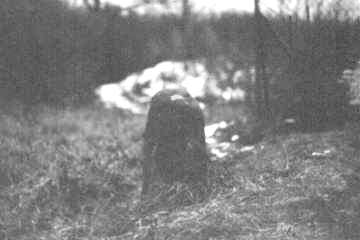Z b u z a n y n e a r P r a g u e
50°01´21,7´´N; 14°16´53,15´´E; 370 m ASL
In the surrounding extensive archaeological findings; Neolithic and Eneolithic Age; documented period Knoviz; Halschtadt; Halschtadt-Laten; vast burial-ground is on the southwesterly of the district locality; small Chapel St. Elizabeth.

This stone stands on the western outskirts of the village, at the end of deep cutting of an old route leading maybe to Pilsen. You can get to it via a street leading through the new development area.

This street is named after the stone, i.e. At Menhir III.
The place is a high ground with far visibility, today however obscured by the abovementioned development. There is no view in east direction.
It is not the highest point within the surrounding area, the route that continues is ascending further more. Therefore we consider it most likely to be a milestone.

The sandstone had been finished (worked, dressed) in a tabular way, with Greek cross engraving in negative relief visible on its west surface.

Its vertical arm is 8 cm wide and 25 cm long; the lateral one is 5 cm wide and of the same length. It has been carved one centimeter deep only.

